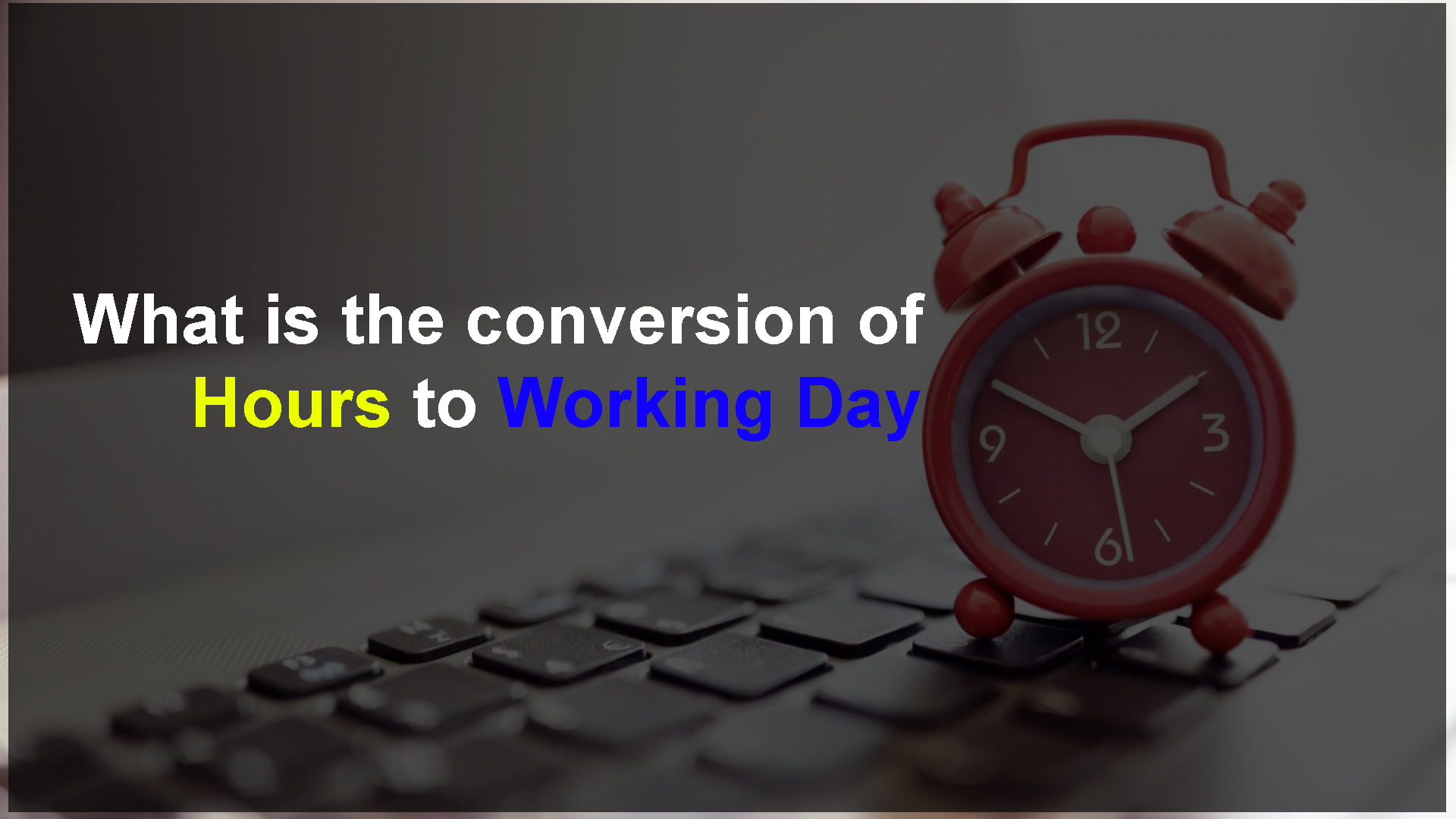What is the conversion of hours to working days?
Understanding Hours to Working Days
Introduction
In the realm of work scheduling and project management, understanding how to convert hours to working days is pivotal. This article delves into the intricacies of this conversion, offering insights and strategies for effective time management.
HOW TO CONVERT HOURS TO DAYS
Understanding Hours to Working Days
When we talk about converting hours to working days, we refer to the process of translating the number of hours required for a task or project into the equivalent number of days needed to complete it. This conversion is crucial for planning and allocating resources efficiently.
In any project, whether it’s a business venture or a personal endeavor, time is a precious commodity. Therefore, being able to convert hours into working days allows for better scheduling and realistic goal-setting.

Factors Affecting Conversion
Several factors influence the conversion of hours to working days. These include the nature of the work, the number of work hours per day, and the number of workdays per week.
The nature of the work determines how tasks are approached and executed. Some tasks may require intense focus and concentration, while others may be more routine or repetitive.
Similarly, the number of work hours per day and the number of workdays per week vary depending on the industry, company policies, and individual preferences.
Calculating Hours to Working Days
Converting hours to working days can be done using a simple formula: divide the total number of hours by the average number of work hours per day. For example, if a task requires 40 hours to complete and the standard workday is 8 hours, the conversion would be 40 hours ÷ 8 hours/day = 5 days.
Let’s consider a practical example. Suppose a project requires 80 hours of work, and the team works 9 hours a day, five days a week. The conversion would be 80 hours ÷ 9 hours/day = 8.89 days, which rounds up to 9 days.
Tips for Efficient Conversion
To streamline the process of converting hours to working days, consider implementing the following tips:
- Prioritize tasks: Identify critical tasks and allocate resources accordingly.
- Utilize time management techniques: Break down tasks into smaller, manageable chunks and set deadlines for each phase.
- Delegate responsibilities: Delegate tasks to team members based on their strengths and expertise.
- Use technology: Leverage project management tools and software to track progress and monitor deadlines.
Common Conversion Challenges
While converting hours to working days can enhance productivity and efficiency, it’s not without its challenges. One common challenge is overworking, which can lead to burnout and decreased performance.
To mitigate these challenges, it’s essential to establish boundaries, take regular breaks, and prioritize self-care. Additionally, incorporating flexibility into your schedule can help accommodate unexpected changes and disruptions.
FAQs about Converting Hours to Working Days
How to avoid burnout?
To avoid burnout, it’s crucial to prioritize self-care, set realistic goals, and establish work-life balance.
Can conversion methods vary by industry?
Yes, conversion methods can vary depending on the nature of the industry, the complexity of the project, and the specific requirements of the task.
Is overtime factored into the conversion?
Yes, overtime hours should be factored into the conversion to ensure accurate scheduling and resource allocation.
How does remote work impact conversion?
Remote work can impact conversion by introducing additional variables such as communication challenges, time zone differences, and technological limitations.
Are breaks included in the calculation?
Yes, breaks should be included in the calculation to ensure that workers have adequate time for rest and rejuvenation.
Can automation help in conversion?
Yes, automation can streamline the process of converting hours to working days by reducing manual tasks and improving accuracy.
Conclusion
In conclusion, understanding how to convert hours to working days is essential for effective time management and project planning. By considering factors such as the nature of the work, work hours per day, and workdays per week, individuals and organizations can optimize their schedules and achieve greater productivity.
Recent Posts:
- UNVEILING THE MAGIC: CONVERT SECONDS TO MINUTES EFFORTLESSLY
- HOW TO CONVERT DAYS TO YEARS 2024
- HOW TO CONVERT HOURS TO YEARS

Leave a Reply